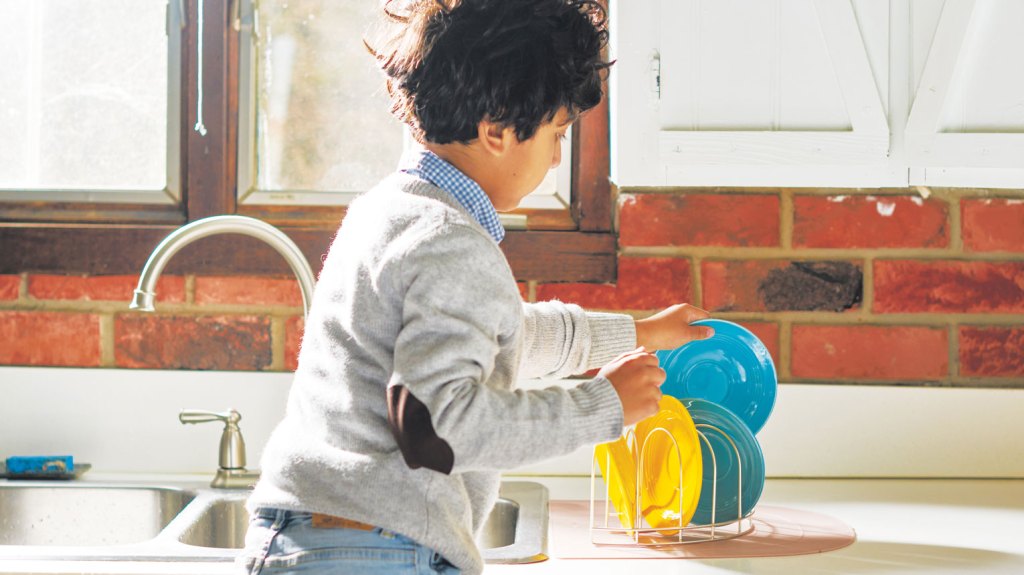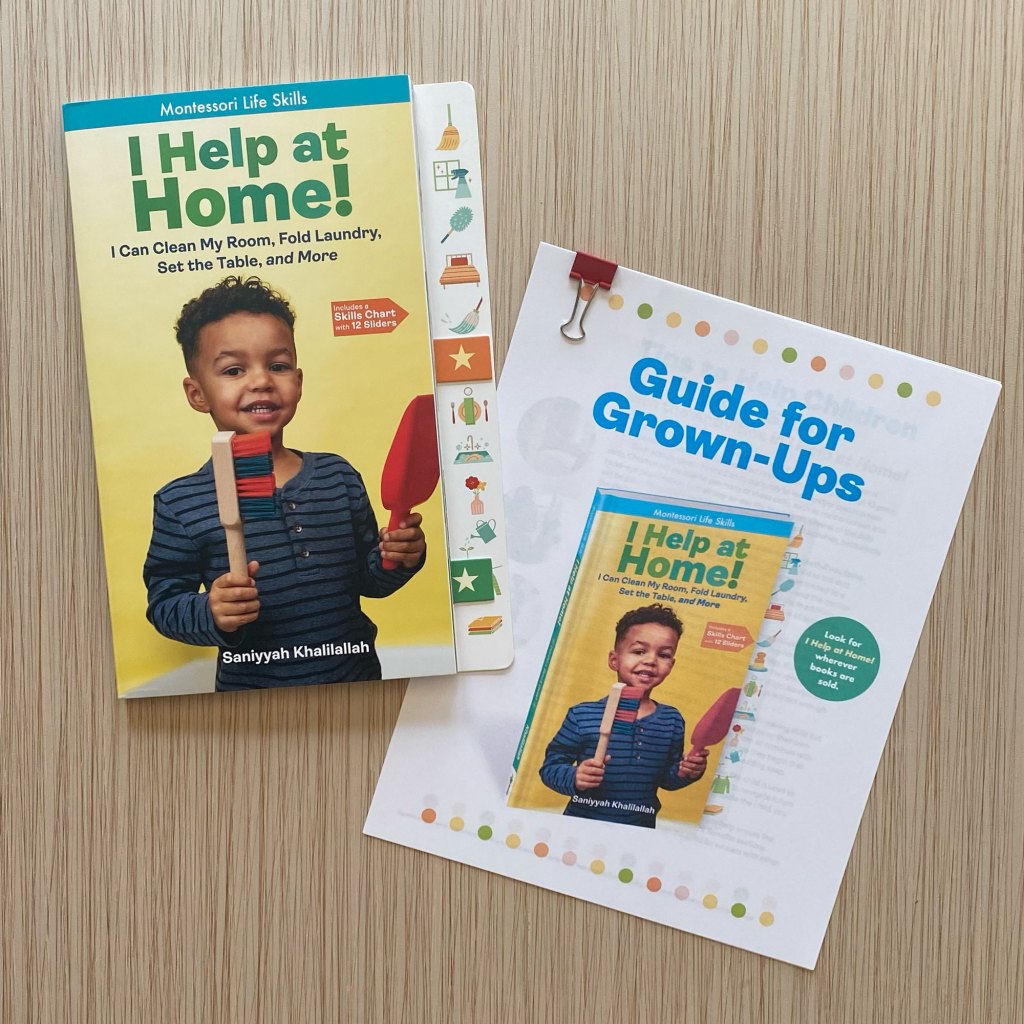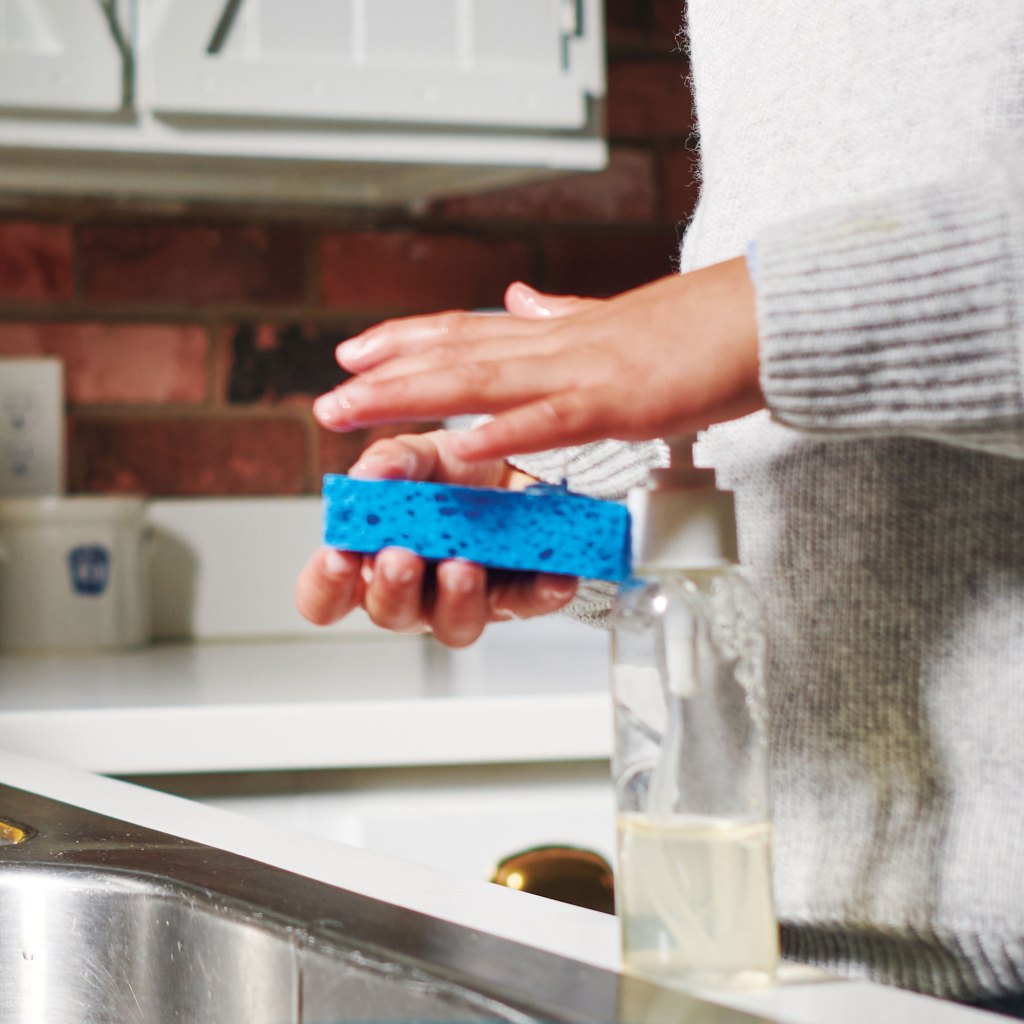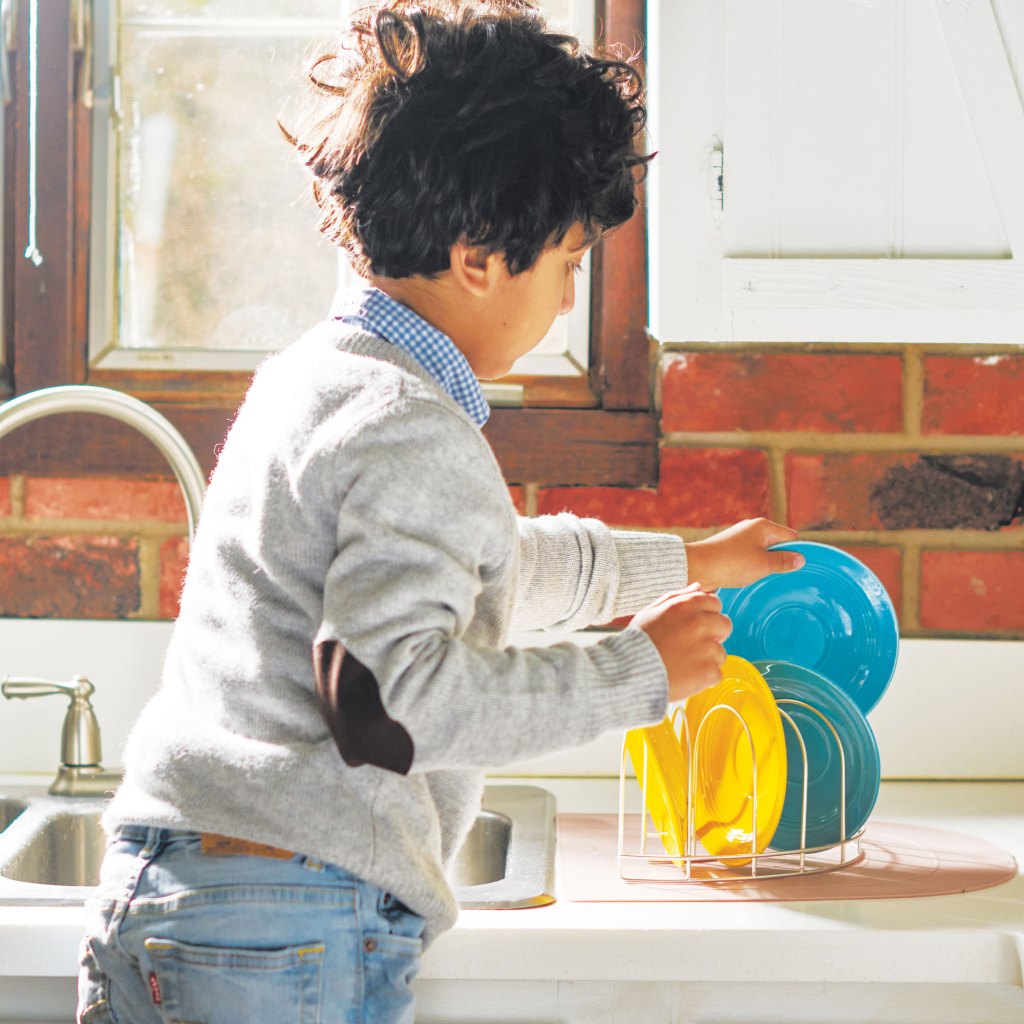
Follow these tips to help children be successful with the activities in I Help at Home!
The activities in the book I Help at Home! are adapted from traditional Montessori lessons that I have used in my classroom for more than 10 years. Each activity gives the child an opportunity to learn and/or practice new skills. Children will be able to use many of these skills, such as concentration and hand-eye coordination, in their day-to-day life. In addition, several of the skills will be part of the child’s foundation for future learning and activities, both inside the classroom and in the outside world.

Download the Guide for Grown-Ups
You will be more likely to recognize the child’s success and growth if you focus on the individual steps of each activity rather than rush the child to the end. For example, the benefits of the child scrubbing a table are not limited to a clean table! Gripping a scrub brush exercises fine motor skills and the motion of moving the brush across a table exercises gross motor skills. In addition, by following the steps in order, the child learns the importance of sequential operations and develops their concentration.
As the child learns, they will find it more helpful if you show and explain the correct way of doing something rather than point out that they have done a step or activity “wrong.” As long as the child is out of harm’s way, allow mistakes to happen. For example, if a young dishwasher forgets to wet the sponge before using soap, they will see that bubbles were not formed. They might be able to figure that out and correct the problem independently if you give them enough space to do so.

This not only gives the child an opportunity to practice problem-solving skills but also helps build the child’s confidence. If the child doesn’t realize on their own that the sponge should be wet before adding soap, allow them to continue with the activity. The next time they wash dishes, emphasize before they begin that in order to form bubbles, the sponge needs to be wet before adding soap.

Making mistakes is part of growing and learning, and when the child is used to solving problems independently, they will be more prepared to navigate future challenges in school and beyond. By allowing mistakes to guide the child, you will help the child develop these important life skills.
In the pages of this guide, I have suggested ways that you can help ensure the child’s short-term success with each activity. The Indirect Benefits sections explain how each part of an activity helps set up the child for success with other lessons and skills down the road. Enjoy, and follow me on
Excerpted and adapted from the I Help at Home! supplementary printable Guide for Grown-ups © Saniyyah Khalilallah.
